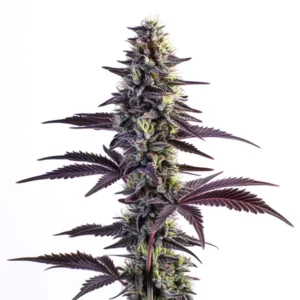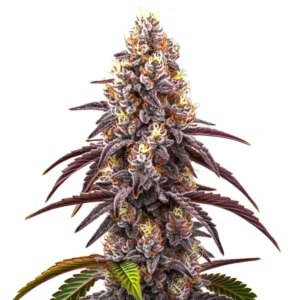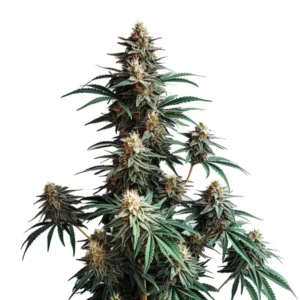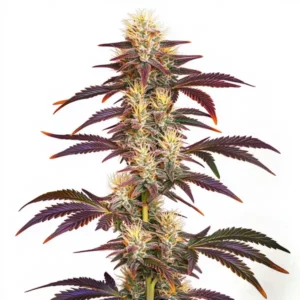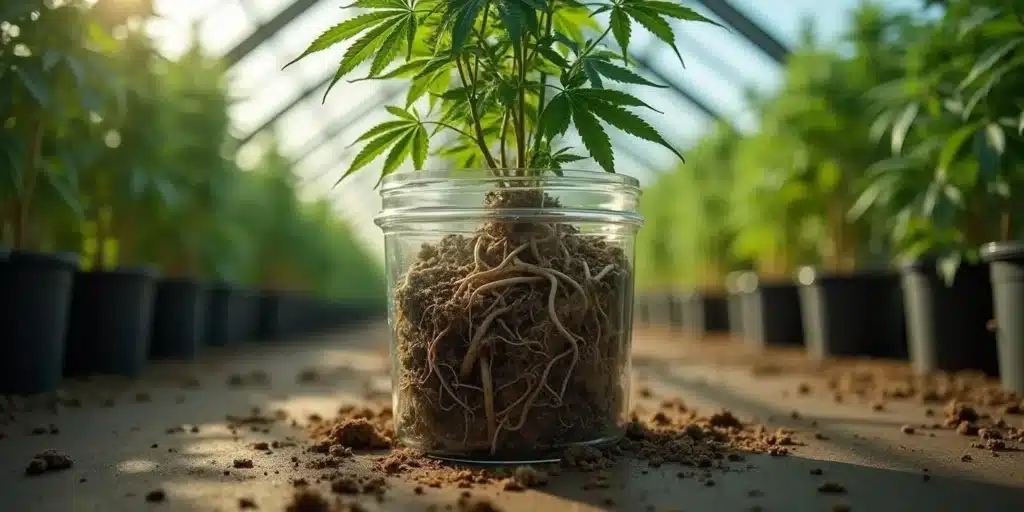
Cannabis Plant Root Bound Symptoms
Growing cannabis can be a rewarding experience, but one common issue many growers face is root bound plants. This happens when the roots outgrow their containers, becoming tangled and compacted. Such a scenario can lead to a host of problems, impacting the health and yield of your plants.
When a cannabis plant becomes root bound, it often shows visible signs of stress. Leaves may start yellowing and wilting, and the plant’s growth may slow down or stop altogether. Addressing root bound issues early can save your crop.
Recommended Strains
Blue Grape Fuel
|
|
THC | 24% - 26% (High) |
|
|
Type | Feminized |
|
|
Yield | High |
|
|
Phenotype | 50% Indica / 50% Sativa |
Bruce Banner x Grape
|
|
THC | 15% - 20% (Medium) |
|
|
Type | Feminized |
|
|
Yield | High |
|
|
Phenotype | 45% Indica / 55% Sativa |
Signs of Root Bound Issues in Cannabis Plants
Identifying root bound cannabis plants can be straightforward. One of the first signs is stunted growth. Another is leaf discoloration, as the compacted roots can’t absorb enough nutrients. You may also notice an increase in the frequency of watering needs, as the dense root mass cannot efficiently absorb and retain water. A root bound plant might also react more severely to temperature fluctuations or light intensity changes.
Promos & Deals
How to Identify Root Bound Cannabis Plants
One practical method is by checking the drainage holes of your pots. If roots are visibly growing out of these holes, it’s a clear sign. Another approach is to gently lift the plant out of its pot. If the roots are tightly wound around the soil mass, or if they resemble a thick mat, your plant is likely root bound. Furthermore, observing the plant’s behavior, like a slow growth rate despite optimal conditions, can provide clues.
Root Bound Cannabis Plant Recovery Methods
Once you’ve identified root bound issues, there are several recovery methods. One of the simplest solutions is repotting. Choose a larger container to give your plant’s roots more space to grow. While repotting, gently loosen the roots to encourage them to spread out in their new home.
In addition to repotting, consider using a root stimulator to encourage new growth. This can help the plant recover more rapidly by promoting root development and enhancing nutrient uptake.
While a ‘hydroponic transition’ is an advanced recovery method, it requires clarification. It is not recommended to transplant a plant from soil directly into a pure hydroponic system (like DWC), as the soil particles will wash away and clog pumps and lines. However, it is very effective to transplant a root bound plant into a soilless hydroponic substrate like coco coir or fiber. These mediums provide excellent aeration and space for new root growth, helping the plant recover without the risk of system failure.
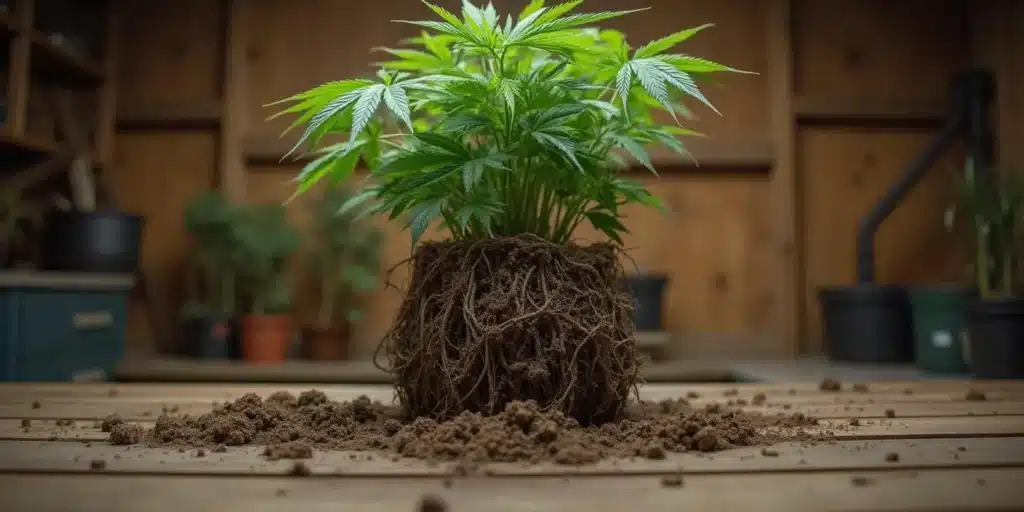
Cannabis Plant Root Bound Prevention Tips
Preventing root bound issues begins with selecting the right pot size. As your plant grows, periodically transplant it into larger containers. Regularly monitor your plant’s growth to anticipate when a larger space is needed.
Over time, you will notice that the soil in your pots compacts and settles with each watering, creating an empty space at the top of the pot. It is a good practice to periodically fill this gap with new, fresh soil. Topping up the soil like this ensures the upper roots remain covered and supported, which can help prevent the plant from becoming root bound as quickly.
Another effective technique to manage the root zone environment is to use a layer of mulch. Covering the topsoil with a mantle of bark chips or similar organic material helps regulate soil temperature and reduces moisture evaporation. This leads to more stable conditions for the roots and can help prevent the stress that contributes to root bound problems.
Implementing proper watering techniques also plays a role. Overwatering can lead to compacted soil, exacerbating root binding issues. Ensuring proper drainage and soil aeration can significantly contribute to effective prevention.
FAQs About Cannabis Plant Root Bound Symptoms
What are the early symptoms of root bound cannabis plants?
Early symptoms often include slowed growth and unusual yellowing of leaves. These symptoms might appear subtle initially, but they become more pronounced as the issue progresses. You may also notice that your plant is less responsive to watering and nutrient applications.
In addition, roots might start escaping through the drainage holes. Monitoring these early signs can prevent more severe complications. Catching root bound symptoms early means you can take corrective actions before the plant’s health is significantly impacted.
Moreover, a noticeable drop in bud production can be an early symptom. If your cannabis plant is producing fewer buds or the buds are smaller than expected, it may be struggling with root space constraints. Similarly, uneven growth patterns, such as one side of the plant being more developed than the other, can indicate root binding issues.
To address these issues, maintain a detailed growth diary. Documenting changes in growth, nutrient uptake, and overall plant health can help you spot early trends and take preventive measures against cannabis plant root bound symptoms.
How can I prevent my cannabis plants from becoming root bound?
One effective prevention method is to ensure your plants are in appropriately sized pots. Start small and gradually transplant your cannabis into larger containers as they grow. This step-by-step approach provides roots with adequate space to expand.
Additionally, choosing pots that promote air circulation can be beneficial. Fabric pots are a great option as they encourage air pruning, which naturally prevents roots from becoming tangled. Keeping an eye on growth patterns will also help you make timely decisions regarding repotting.
Also, consider rotating your plants regularly. This prevents one-sided growth and ensures that roots grow evenly throughout the soil. Balanced root distribution can greatly reduce the risk of your plants becoming root bound.
Furthermore, integrating a root health supplement into your fertilization routine can enhance root expansion and resilience. These supplements provide vital micronutrients that support overall root health, aligning with cannabis plant root bound prevention tips.
Are there specific cannabis strains less prone to root bound issues?
Some cannabis strains naturally have a more compact growth pattern, which can reduce the likelihood of becoming root bound. Strains like Grape Ape, known for its bushy structure, may require less frequent repotting.
However, even these strains benefit from regular monitoring and appropriate pot sizing. By understanding the growth characteristics of your chosen strain, you can better manage its root development and prevent potential issues.
Moreover, certain strains have genetics that favor root expansion, requiring more frequent repotting and larger containers. Knowing these traits can guide your choices in container selection and management practices, reducing the incidence of symptoms of root bound cannabis plants.
Experimenting with different growing mediums can also influence root development. Some mediums promote faster growth and may necessitate more frequent repotting. Understanding the relationship between strain, medium, and container size is key to preventing root bound conditions.
Is root pruning safe for cannabis plants?
Root pruning can be safe if done carefully. It involves trimming some of the roots to encourage new growth and prevent tangling. Use clean, sharp scissors or pruners to remove excess roots, taking care not to damage the plant.
This technique is especially useful for plants that have been in the same pot for an extended period. By facilitating healthier root growth, root pruning can revive a struggling plant and improve its overall vitality.
When considering root pruning, it is important to time the procedure correctly. Performing root pruning during the plant’s vegetative stage allows for better recovery and integration into the root system. This timing helps minimize stress and supports smoother transition to healthier growth.
Additionally, post-pruning care is crucial. Ensuring the plant receives adequate nutrients and water following pruning can help mitigate any shock and promote rapid recovery. Exploring root bound cannabis plant recovery methods like pruning can greatly enhance plant vitality.
How does repotting help in resolving root bound issues?
Repotting provides your cannabis plants with more space to grow. By moving them into larger containers, you alleviate the pressure on the roots, allowing them to expand and absorb nutrients more effectively.
During repotting, carefully loosen the root ball to encourage outward growth. This not only resolves current issues but also sets the stage for healthier development. Regular repotting, as part of your cultivation routine, can significantly reduce the risk of root bound problems.
Beyond just increasing space, repotting helps refresh the growing medium. Fresh soil can provide essential nutrients and improve soil aeration, further enhancing root health and preventing future symptoms of root bound cannabis plants.
Additionally, repotting gives you the opportunity to inspect the root system closely for any signs of disease or pests, allowing for early intervention. These proactive measures, part of effective root bound cannabis plant recovery methods, are integral to sustaining plant health and productivity.


